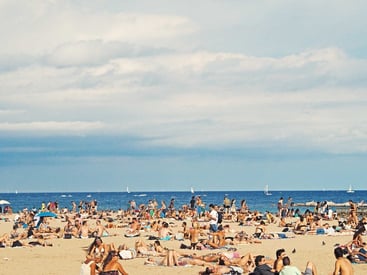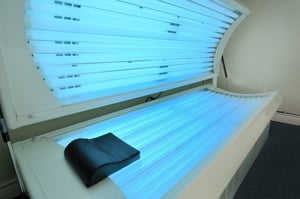5 ways you can be exposed to UV radiation
Did you know that around 99 per cent of non-melanoma skin cancers and 95 per cent of melanomas are caused by exposure to ultraviolet (UV) radiation? While the most common source of UV radiation is the sun, there are many other (surprising) ways you can be exposed to this invisible form of radiation.
Excessive or unprotected exposure to UV radiation causes immediate and irreversible damage to your skin cells. At first, this damage appears as a tan on your skin and will sometimes develop into a red, irritable burn. In cases of repeated or prolonged exposure, your skin cells can become so damaged that in later life you may experience premature signs of ageing (like wrinkles and sagging skin) or develop skin cancer.
To prevent the effects of UV exposure, you need to physically block the radiation from touching your skin. This is best done with a hat, sunglasses, sunscreen and protective clothing including long sleeves and a collared shirt - what anyone would typically wear outdoors when UV levels are high.
Here are five ways you can be exposed to UV radiation.
Sunlight
 UV rays can't be seen or felt. They are different from the sun's heat or light, which is why you can still get sunburnt on cool or cloudy days. The strength of the sun's UV rays depends on many factors, including:
UV rays can't be seen or felt. They are different from the sun's heat or light, which is why you can still get sunburnt on cool or cloudy days. The strength of the sun's UV rays depends on many factors, including:
- The time of day: UV radiation from the sun is strongest between 10am and 4pm.
- The season: Summer and spring see the highest levels of UV, although they can remain high year-round.
- Distance from the equator: UV levels become stronger the closer you live to the equator.
- Cloud cover: Sometimes cloud cover can block UV radiation from reaching the ground, while at other times it can actually reflect the UV rays and magnify them. It's important to remember that there can be high levels of UV radiation even on cloudy days, and it's always a good idea to check the UV forecast before going outside.
- Reflective surfaces: UV rays can bounce off water, sand, snow, concrete or grass, which magnifies the intensity.
Black light lamps
Black light lamps give off UV rays and some visible light, but have a filter that blocks out most of that while letting the UV rays through. These bulbs have a purple glow and are used to view fluorescent material. Bug-zapping insect traps also use black light.
Tanning beds
 Commercial solariums (also known as sunbeds or tanning beds) are illegal to operate in Australia due to their intense emissions of UV radiation. However, this doesn't stop people from using tanning beds in their own homes. The amount of UV radiation you are exposed to from a tanning bed depends on how long you stay in the bed and how many times you use it. If you use a tanning bed before the age of 35, you increase your risk of melanoma by 75 per cent.
Commercial solariums (also known as sunbeds or tanning beds) are illegal to operate in Australia due to their intense emissions of UV radiation. However, this doesn't stop people from using tanning beds in their own homes. The amount of UV radiation you are exposed to from a tanning bed depends on how long you stay in the bed and how many times you use it. If you use a tanning bed before the age of 35, you increase your risk of melanoma by 75 per cent.
Nail salon lamps
UV lamps are sometimes used in nail salons to dry and cure your nail polish quickly. The short, intense bursts of UV radiation are absorbed by your hands with little to no protection. However, studies show that the risk of developing skin cancer from these lamps is very small, as the rate of exposure is so infrequent.
Xenon arc lamps, plasma torches, and welding arcs
Xenon and xenon-mercury arc lamps are used for many things, such as UV “curing” of inks and coatings, video projection, fibre optics, disinfection, to simulate sunlight (for testing solar panels, for example), and even in some car headlights. Plasma torches and welding arcs are a concern in terms of workplace UV exposure, and people who work with these tools must always wear special protective clothing.
- Tags:
- Risks
